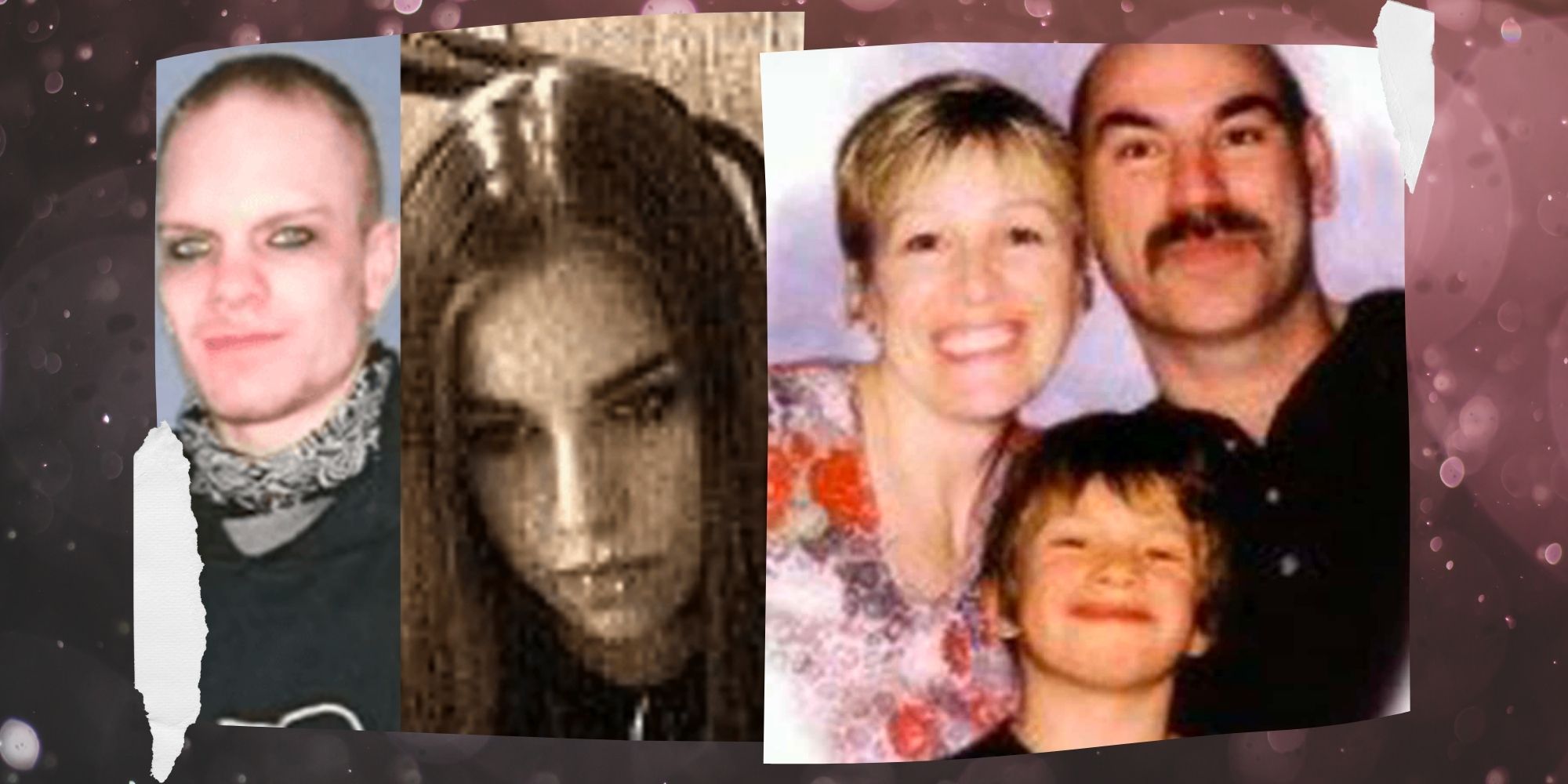The case of Jasmine Richardson, a convicted murderer, has captivated the public's attention for years. Her story is one of tragedy, crime, and the complexities of human behavior. As we delve into this case, we will explore the events that led to her conviction and the impact it has had on society.
Jasmine Richardson's story is not just about a crime but also about understanding the circumstances surrounding it. By examining her life, the events leading to the crime, and the aftermath, we can gain a deeper insight into the legal and social implications of such cases.
This article aims to provide a comprehensive overview of Jasmine Richardson's life, the murder case, and its aftermath. We will explore various aspects of the case, including legal proceedings, public reaction, and the lessons learned. Let's begin by understanding the background of this complex case.
Read also:Wanda Nara Instagram
Biography of Jasmine Richardson
Early Life and Background
Jasmine Richardson was born on July 29, 1987, in Edmonton, Alberta, Canada. Her early life was marked by challenges, including exposure to crime and violence. Growing up in a neighborhood plagued by gang activity, Jasmine's environment played a significant role in shaping her future decisions.
Below is a summary of her personal data:
| Full Name | Jasmine Richardson |
|---|---|
| Date of Birth | July 29, 1987 |
| Place of Birth | Edmonton, Alberta, Canada |
| Known For | Convicted of first-degree murder |
The Jasmine Richardson Murder Case
Understanding the Crime
The crime that brought Jasmine Richardson into the spotlight occurred on October 15, 2004. The victim, Kristi Campbell, was brutally murdered during what was initially described as a robbery gone wrong. The case gained national attention due to the brutality of the crime and the young age of the perpetrators.
Key points about the crime include:
- Kristi Campbell was 32 years old at the time of her death.
- The murder took place in Edmonton, Alberta.
- Jasmine Richardson was 17 years old when she was arrested for the crime.
Legal Proceedings and Conviction
The Trial
Jasmine Richardson's trial began in 2006, with the prosecution arguing that she played a significant role in the murder. The defense, however, claimed that Jasmine was coerced into participating in the crime by her boyfriend, Travis McWatty, who was also involved.
According to a report by the Canadian Broadcasting Corporation (CBC), the trial lasted several weeks, with numerous witnesses testifying about the events leading up to the murder. The jury ultimately found Jasmine guilty of first-degree murder, a decision that sparked widespread debate about the role of coercion and responsibility in such cases.
Read also:Shintaro Kago
The Role of Travis McWatty
Co-Defendant and Influence
Travis McWatty, Jasmine Richardson's boyfriend at the time, was also convicted of first-degree murder. Many legal experts and psychologists argued that McWatty exerted significant influence over Jasmine, contributing to her involvement in the crime. This aspect of the case raised important questions about the impact of relationships on criminal behavior.
According to a study published in the Journal of Forensic Psychology, individuals in abusive or controlling relationships may be more likely to engage in criminal activities under the influence of their partners. This dynamic was evident in the relationship between Jasmine and Travis.
Social and Psychological Factors
Exploring the Motives
Psychologists have examined the social and psychological factors that may have contributed to Jasmine Richardson's involvement in the murder. Growing up in a neighborhood with high crime rates and limited opportunities, Jasmine faced numerous challenges that influenced her decisions.
Research conducted by the Canadian Department of Justice highlights the correlation between socioeconomic factors and criminal behavior. In Jasmine's case, her environment and the people she associated with played a critical role in shaping her actions.
Public Reaction and Media Coverage
Media's Role in Shaping Perception
The Jasmine Richardson case received extensive media coverage, with news outlets focusing on the brutality of the crime and the youth of the perpetrators. While media coverage helped bring attention to the case, it also contributed to public outrage and debate about the justice system's handling of juvenile offenders.
According to a report by the Edmonton Journal, the media's portrayal of Jasmine as a "cold-blooded killer" overshadowed the complexities of her situation. This narrative influenced public perception and fueled discussions about the treatment of young offenders in the legal system.
Legal Implications and Sentencing
Understanding the Sentence
Jasmine Richardson was sentenced to life in prison without the possibility of parole for 25 years. This sentence reflects the severity of the crime and the legal system's stance on first-degree murder. However, it also sparked debates about the appropriateness of such sentences for juvenile offenders.
According to the United Nations Convention on the Rights of the Child, which Canada is a signatory to, juvenile offenders should be treated differently from adults, taking into account their age and capacity for rehabilitation. Jasmine's case has been cited in discussions about the need for reform in the justice system's approach to young offenders.
Rehabilitation and Future Prospects
Path to Redemption
Since her conviction, Jasmine Richardson has expressed remorse for her actions and has participated in rehabilitation programs while incarcerated. Her efforts to turn her life around have been documented in interviews and media reports, highlighting the potential for change even in the most severe cases.
A study published in the Journal of Criminal Justice suggests that rehabilitation programs can significantly reduce recidivism rates among offenders. Jasmine's participation in such programs offers hope for her future and serves as an example of the importance of providing opportunities for redemption.
Lessons Learned and Social Impact
Preventing Future Crimes
The Jasmine Richardson case serves as a reminder of the importance of addressing the root causes of crime, particularly among young people. By focusing on prevention, rehabilitation, and education, society can work towards reducing the incidence of violent crime and ensuring that individuals like Jasmine have the opportunity to turn their lives around.
Organizations such as the John Howard Society and the Elizabeth Fry Society have been instrumental in advocating for reform in the justice system and providing support to offenders. Their work highlights the importance of community involvement in addressing the complexities of criminal behavior.
Conclusion and Call to Action
In conclusion, the Jasmine Richardson case is a complex and multifaceted story that sheds light on the challenges faced by young offenders and the justice system's response to their crimes. By examining the events surrounding the case, we can gain a deeper understanding of the factors that contribute to criminal behavior and the potential for rehabilitation.
We invite you to share your thoughts and insights in the comments section below. Your input can help us further explore the issues raised by this case and contribute to ongoing discussions about justice and reform. Additionally, we encourage you to explore other articles on our site that delve into related topics, such as juvenile justice and crime prevention.
Table of Contents
- Biography of Jasmine Richardson
- The Jasmine Richardson Murder Case
- Legal Proceedings and Conviction
- The Role of Travis McWatty
- Social and Psychological Factors
- Public Reaction and Media Coverage
- Legal Implications and Sentencing
- Rehabilitation and Future Prospects
- Lessons Learned and Social Impact
- Conclusion and Call to Action

/arc-anglerfish-syd-prod-nzme.s3.amazonaws.com/public/DXVB5PXO6FFBNKYNVQ6SHZ3O5Q.jpg)
